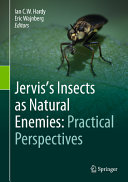

Most ebook files are in PDF format, so you can easily read them using various software such as Foxit Reader or directly on the Google Chrome browser.
Some ebook files are released by publishers in other formats such as .awz, .mobi, .epub, .fb2, etc. You may need to install specific software to read these formats on mobile/PC, such as Calibre.
Please read the tutorial at this link: https://ebookbell.com/faq
We offer FREE conversion to the popular formats you request; however, this may take some time. Therefore, right after payment, please email us, and we will try to provide the service as quickly as possible.
For some exceptional file formats or broken links (if any), please refrain from opening any disputes. Instead, email us first, and we will try to assist within a maximum of 6 hours.
EbookBell Team

4.3
58 reviewsThe appeal of insect predators and, in particular, parasitoids, as research animals derives from the relative ease with which many species may be cultured and experimented on in the laboratory, the simple life-cycles of most parasitoid species, and the increasing demand for biological pest control as a key component of the integrated pest management approach.
There is now a very substantial literature on insect natural enemies and thus a great need for a general text that enquiring students or research workers can use in deciding on approaches and techniques that are appropriate to the study and evaluation of such insects.
This book fulfils that demand. It is a considerably updated and expanded version of a previous best-seller and provides an account of major aspects of the biology of predators and parasitoids, punctuated with information and advice on which experiments or observations to conduct and, importantly, how to carry them out.
Guidance is provided, where necessary, on the most recent further literature that may need to be consulted on given topics.
While researchers can now refer to several books on parasitoids and predators, Jervis’s Insects as Natural Enemies is unique in emphasising practicalities.
It is aimed at students and professionals working in universities and both government and commercial institutes in the fields of integrated pest management, agriculture, horticulture and forestry, as well as those interested in fundamentals of behavioural, population, community and evolutionary ecology.